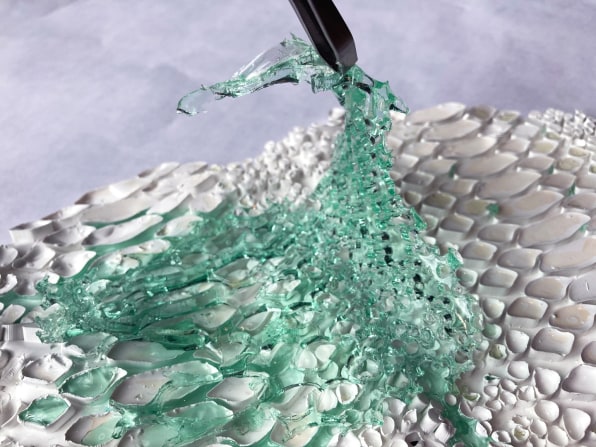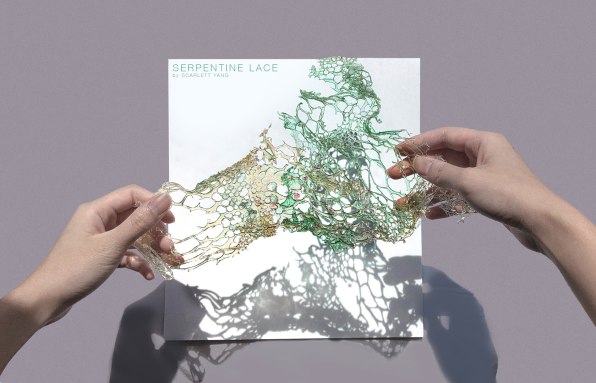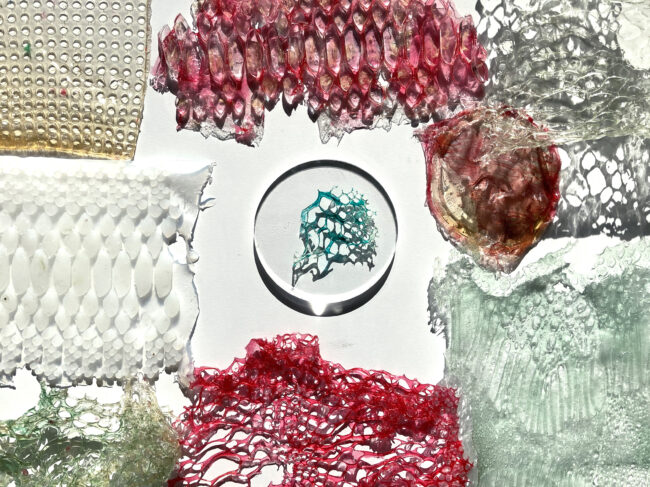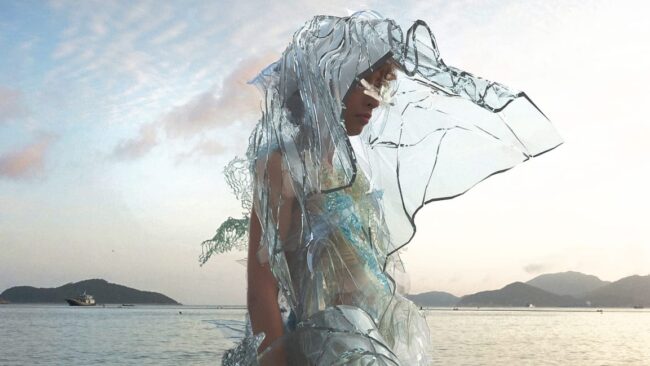The future of sustainability in fashion is a subject that many young designers are aiming to address. As more and more solutions arise, the idea of producing textiles from algae is becoming to sound more like a plausible fix than the plot of a sci-fi film. Designers such as Charlotte McCurdy and Roya Alghighi have tapped into the potential of this living fabric, creating clean-cut fashion that works to reduce the industries carbon footprint with a textile that absorbs the overabundant greenhouse gas. London-based designer and recent graduate of Central Saint Martins, Scarlett Yang is contributing to the trend with serpentine lace, an algae-based biomaterial that seeks to implement sustainable practices in the realm of fashion while also giving a spellbinding glimpse of what fashion combined with the life cycle of organic matter looks like.
This fabric of the future grows overtime, transforming in shape and form in response to different humidity and temperature levels. Once it has reached the end of its life cycle, the glass-like material decomposes when soaked in alkaline water. This process can take from one to twenty-four hours, depending on the temperature of the water. Developed in a laboratory, Yang uses algae extract and sericin, a silk cocoon protein that is usually a by-product of textile manufacturing, to bring her material to life. She then pours the solution into a casting mould created with 3D printing and laser cutting technologies and lets the biomaterial solidify. The results are a crystal-like webbed dress tinted with hues of translucent sage and seafoam green. The hydrophobic properties of sericin cause the dress to crease and twist in response to the environment, simulating the movements of an ocean creature.
Yang’s design exists primarily in the virtual world. While the material and its characteristics are real, Yang’s exhibition of it was a virtual animation. To show how the textile works while minimizing waste, she used 3D technologies to generate simulations of how the dress reacts in different environments. As the project’s tagline “From physical to digital, material to immaterial” suggests, serpentine lace is truly a fabric of the future that travels through dimensions, defying everything we’ve known fashion to be. In an effort to combat the abhorrent amount of waste the fashion industry produces, Yang has created a biodegradable and digital solution whose captivating presence opens the discussion to how this innovative material can be introduced to a commercial market.









